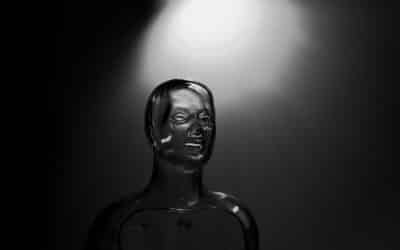
Archetypes
Twists and turns aren’t just for dark alleys and spiral staircases in the dimly lit mansions of mystery lore. They’re also for character archetypes—the bedrock of storytelling—especially when they’re flipped on their head, fedora and all. And nobody does it better than the mystery genre, where stereotypes go to die… or better yet, to be reborn.
Take the femme fatale, the siren of the shadows, as old as the genre itself. She’s supposed to seduce, double-cross, and sashay away into the night, right? Wrong. Contemporary storytellers decided that script was as stale as last week’s bread. In steps Lisbeth Salander, the enigmatic hacker from Stieg Larsson’s “Millennium” series. She’s as dangerous and unpredictable as any classic femme fatale, but she’s also the hero. Salander isn’t there to trip up the male protagonist—she is the protagonist, a deeply flawed and fascinating one.
Moving from the page to the screen, TV shows have carved their own notch in archetype annihilation. Consider BBC’s “Sherlock,” a masterful modernization of Conan Doyle’s detective. Sherlock Holmes is no longer just the icy intellect with a pipe; he’s a high-functioning sociopath with a smartphone. His counterpart, Dr. John Watson, isn’t just the trusty sidekick scribbling notes; he’s a war vet with a blog and a pistol. The modernization doesn’t stop at gadgets and blogs; it extends to the essence of the characters themselves, making them more relatable and far more unpredictable.
The musty rooms of whodunits past are now airing out, and with them, the archetype of the infallible detective. No longer do they stand as unassailable pillars of logic and reason. They’ve been humanized, made vulnerable. Adrian Monk from the series “Monk” is the epitome of this. He’s a brilliant detective, sure, but his battles with OCD make him as much a mystery to himself as the cases he solves.
Meanwhile, the sidekick isn’t just the sidekick anymore. They’ve been stepping out of the protagonist’s shadow and into their own messes. Take Dr. Watson in the aforementioned “Sherlock” or the plethora of Watsonian characters who have been given more depth over the years, evolving into fully fleshed out characters with their own arcs and agency. They’re not just there to make the detective look good. They solve, they stumble, and sometimes, they save the day.
The cozy mysteries, those quaint, often pastoral settings where murders are solved between cups of tea, have been invaded by unlikely sleuths. The knitting grandmothers and nosy neighbors haven’t been pushed out, but they’ve been joined by a colorful cast. Take “Pushing Daisies,” a series that combines the charm of a cozy mystery with the surreal. The protagonist is a pie-maker who can revive the dead—a useful skill when it comes to asking the deceased who did them in. It’s as off-beat as it gets, bending the archetype until it does the Charleston.
But let’s not forget the villains—the mustache-twirling masterminds. Or are they? Authors like Gillian Flynn have pulled the rug out from under the criminal mastermind archetype. In “Gone Girl,” Amy Dunne plays the victim, the antagonist, and at times, the anti-hero. She’s not lurking in the shadows; she is the shadows, and the light, and everything in between. There’s no binary of good versus evil; it’s a spectrum, and Amy Dunne is dancing on every inch of it.
Then there’s the trope of the corrupt city as a character in itself. Neo-noirs have always been fond of dark, rainy streets as backdrops for equally murky morality. But shows like “The Wire” have gone deeper, showing that the city isn’t just a backdrop; it’s a complex organism with its own archetypal subversions. The good cops can be bad, the bad guys can be good, and the city itself is a puzzle more intricate than any murder case.
The archetypal mystery house—those sprawling, creaky mansions—have been traded in for spaceships and virtual realities. “Altered Carbon” takes the detective story and launches it into the future, with a protagonist who isn’t even always in the same body. The haunted house has become the haunted consciousness, and the ghosts are digital.
Young adult mysteries are also getting in on the game, swapping the teen sleuths of yesteryear for more complex young protagonists dealing with the world’s weight on their shoulders. Veronica Mars might start as a high school student moonlighting as a private investigator, but she ends up dealing with issues that would have Nancy Drew’s head spinning. It’s no longer just about figuring out who stole the exam answers—it’s about societal collapse, trauma, and justice.
What’s driving this topsy-turvy trend? Maybe it’s the public’s insatiable appetite for something new, or maybe it’s the inevitable evolution of genre. Whatever it is, these twists on classic archetypes aren’t just for shock value. They’re for the sake of deeper storytelling, richer characters, and mysteries that aren’t just about whodunit, but who these people are and why they do the things they do.
Screen adaptations have been particularly adept at this. They have the visuals to stun and the pace to keep hearts racing, and when it comes to turning archetypes on their head, they do it with panache. “Knives Out” is a gleaming example, with its play on the murder mystery ensemble cast. It’s a nod to the likes of Agatha Christie, but with a fresh spin that pulls the rug out from under the audience again and again. It takes the classic setup—family gathering, sudden death, a will reading—and turns it into a commentary on class, privilege, and the very genre it’s a part of.
The archetypal puzzle-box plot, where everything fits together with clockwork precision, has also been subverted. Shows like “Twin Peaks” have shown that sometimes the puzzle pieces don’t fit, or they’re from different puzzles altogether. It’s not about the satisfaction of the last piece snapping into place; it’s about the journey through the bizarre, the unsolvable, and the unsettling.
And so, the mystery genre continues to evolve, constantly challenging its own conventions. Characters who once seemed as permanent as the ink their stories were printed with are changing. They’re not who they used to be—and that’s the point. It’s a game of expectations, where the only rule is that there are no rules. The only sure thing is that nothing is sure, and nobody is quite who—or what—they seem.
In a world where change is the only constant, mystery literature and its screen adaptations are leading the charge, proving that when it comes to character archetypes, sometimes the most satisfying mysteries are the characters themselves. Gone are the days when a detective was merely a detective, a sidekick just a sidekick, and a villain only a villain. Now, they can be anything. And in this new age of mystery, that’s exactly what they need to be
Similar Features
Time Travel Elements
The Machine, Busting the Space-Time Continuum, and Immortality
Space Opera Thrillers
Nail-biting tension in worlds of spaceships and doom
Artificial Intelligence in Thrillers
AI and Identity in Thrillers



